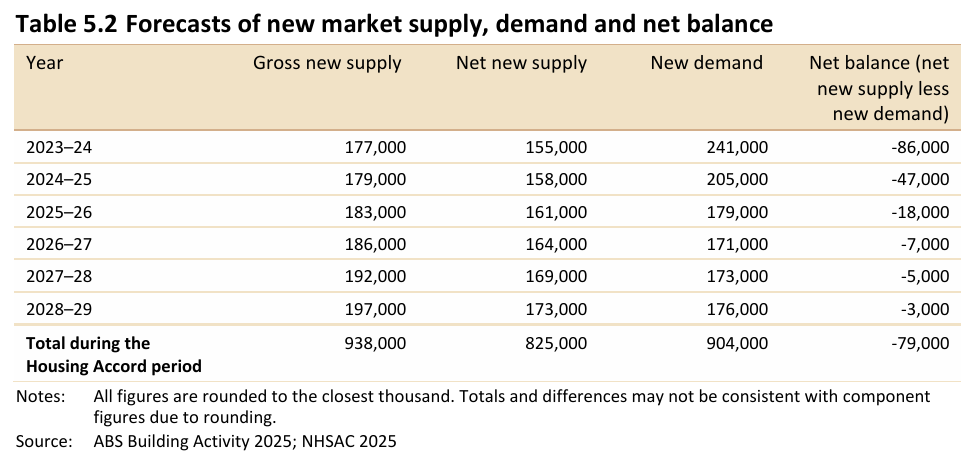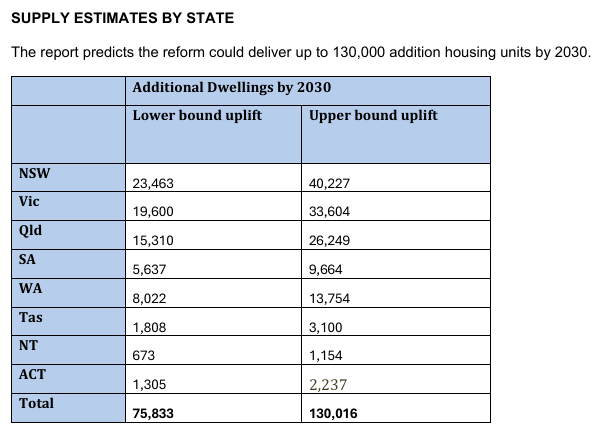Australia is suffering a generational housing shortage amid historically high immigration-driven population growth and sluggish housing supply.
In late 2023, the National Cabinet agreed to a new Housing Accord, which would deliver 1.2 million homes over five years, commencing on 1 July 2024.
Australian dwelling approvals, commencements, and completions are currently tracking around 25% (60,000) below the National Cabinet’s annual target, which requires 240,000 homes to be built annually for five years.

Last week, it was revealed via a Freedom of Information (FOI) request that the Australian Treasury told the government in an incoming government briefing that its 1.2 million target “would not be met”.
The Treasury’s briefing echoed the federal government’s own advisory body, the National Housing Supply and Affordability Council (NHSAC), which forecast that only 938,000 dwellings would be built nationally over the five-year National Housing Accord period, 262,000 below the target of 1.2 million.
NHSAC also forecast that the nation’s housing shortage would worsen by 79,000 over the next five years.

As part of the solution, the Labor-aligned McKell Institute has proposed increasing in the current 50% capital gains tax (CGT) discount for people who invest in new units or apartments, claiming it could result in an additional 130,000 homes being built before 2030.

Source: McKell Institute
Allied to the Institute’s call for an increase in the CGT discount for new units and apartments is a call for a reduction in the discount for investors who buy existing detached homes, with the Institute claiming its proposal would increase the number of new properties and put downward pressure on rents. Specifically:
- Increase the CGT discount on new attached builds to 70%, from 50%.
- Decrease the CGT discount on existing detached dwellings to 35%, from 50%.
- Leave the CGT discount on new detached dwellings unchanged at 50%.
- Grandfathering all existing investments.
Report co-author Richard Holden contends that the federal government’s target of 1.2 million new homes will not be met under current tax settings.
“A key problem with our existing tax settings on property is they orient too much investment toward established dwellings, at the cost of new supply”, he said.
“There is nothing wrong with the commonly held desire of everyday investors to secure their future by investing in the housing market. But this desire should be harnessed to achieve our national objectives on housing supply”.
While I don’t place much faith in the claimed 130,000 boost to construction from the proposals, the policy is likely to have a modest positive impact on supply and will likely be revenue-neutral.
Moreover, due to their lower land content, apartments typically appreciate less than detached homes. Therefore, it makes sense to offer larger CGT discounts to apartments than houses.
Overall, the proposal is a common-sense policy change that would offer net benefits to both renters and society as a whole.
Just don’t expect it to turn the supply situation around magically.

